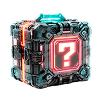BlockRooms is a new Web3 game where users own digital rooms, develop them, and engage in social and economic competition. The game offers strategic gameplay based on NFTs and smart contracts, combining elements of digital real estate, decentralized interaction, and tokenomics. Although the project is still in an early stage, a waitlist is already available for early access. In this overview, we’ll explore the key aspects of BlockRooms: concept, gameplay, economy, technology, and risks.
Contents
- Concept and Goals of BlockRooms
- Core Gameplay Mechanics
- Key Economic Elements of the Game
- BlockRooms Technological Architecture
- Project Risks and Limitations
- Conclusion

1. Concept and Goals of BlockRooms
BlockRooms introduces the concept of owning unique digital rooms in the form of NFTs. These rooms can be purchased, upgraded, and used as part of an on-chain strategy. The idea combines the simplicity of Web2 interfaces with the transparency and control of Web3 environments.
Each room is not just an NFT but a functional unit that may become part of a larger "digital district." Players can connect their rooms, trade them, interact with others, join events, or compete for control. BlockRooms aims to build a scalable metaverse where ownership influences gameplay and growth potential.
2. Core Gameplay Mechanics
Gameplay in BlockRooms is designed around growth, interaction, and strategy. It merges mechanics from idle building, resource management, and multiplayer dynamics. Players can decide how actively they engage — from passive investors to competitive players managing interconnected rooms.
The game encourages experimentation, social cooperation, and economic planning. From buying a room to forming alliances or taking part in events, every decision has long-term consequences.
Key gameplay actions include:
- Room acquisition: Buy NFT rooms via marketplace or through special drops.
- Upgrading rooms: Improve design, utility, and economic productivity.
- Linking rooms: Merge spaces into strategic blocks for bonus effects.
- Social interaction: Collaborate or compete with other players.
- Seasonal events: Participate in missions and earn exclusive rewards.
These mechanics provide multiple layers of engagement and promote long-term involvement. Strategic depth and community-driven features distinguish BlockRooms from simpler Web3 games.
3. Key Economic Elements of the Game
BlockRooms relies on a decentralized economy that connects asset ownership, marketplace liquidity, and gameplay mechanics. The developers focus on long-term value and balanced monetization through NFT scarcity, utility, and user-driven content.
Below is a breakdown of the core economic components:
| Component | Description | Role in Economy |
|---|---|---|
| NFT Rooms | Unique digital real estate assets | Main ownership unit and gameplay base |
| In-game Token | Used for upgrades, features, and trades | Drives circulation and growth |
| Marketplace | Trading hub for rooms and upgrades | Establishes liquidity and user pricing |
| Upgrades | Enhancements with real economic value | Increase competitiveness and returns |
| Events | Reward-based activities and competitions | Boost user retention and engagement |
Each element influences the others — creating a layered economy where demand, supply, and participation shape value. To combat inflation, developers plan to implement burn mechanisms and emission limits.

4. BlockRooms Technological Architecture
BlockRooms is being developed as a fully on-chain game, leveraging NFT standards, smart contracts, and decentralized infrastructure. Every in-game action — from room purchase to upgrading — will be recorded transparently on the blockchain.
The project is expected to run on EVM-compatible networks like Polygon, Base, or Arbitrum, allowing compatibility with wallets such as MetaMask. Mobile users may interact through PWA or Telegram mini-app interfaces.
In future versions, BlockRooms might support DAO governance, third-party plugins, or metaverse extensions. Open-source contracts and third-party audits are key to ensuring user confidence and system integrity.
5. Project Risks and Limitations
Despite promising ideas, BlockRooms remains in early development. The lack of a public whitepaper or live demo raises questions among early adopters and investors.
There are also economic challenges, such as asset hoarding, price speculation, and possible imbalance between early and new players. Legal and regulatory aspects related to NFTs may also introduce hurdles for global expansion.
Ongoing development transparency, tokenomic design, and communication with the community will determine whether BlockRooms thrives or stalls.
6. Conclusion
BlockRooms combines digital ownership, NFT-based strategy, and Web3 monetization into one scalable platform. Its design encourages social interaction, economic planning, and progressive ownership.
To achieve its goals, the project team must release clear documentation, secure smart contracts, and foster early community trust. Regular updates, roadmap transparency, and open engagement will be crucial.
With thoughtful execution, BlockRooms could set a new standard for decentralized building games and NFT-powered virtual economies.





